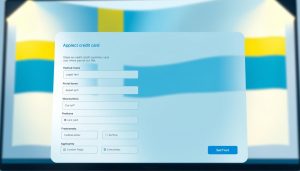When starting your car search, it’s easy to get carried away by flashy advertisements and sleek models. But setting expectations from the beginning can make the experience more productive. Consider your practical needs such as daily commute, weather conditions, cargo space, and fuel efficiency. These elements shape what kind of vehicle will serve you best, regardless of trends or promotions.
It’s also helpful to define your non-negotiables versus your nice-to-haves. Knowing where you’re willing to compromise can save you time while browsing. This clarity creates a more focused shopping journey and reduces the temptation to overspend on unnecessary features.
Researching Makes and Models That Fit Your Lifestyle
The U.S. market offers thousands of combinations when it comes to cars, trims, and brands. To narrow down the options, it’s useful to compare models that align with your routine and budget. Some people prioritize reliability and maintenance costs, while others are drawn to performance or design.
Reading customer reviews and expert evaluations can provide real-world insights that go beyond the spec sheets. Ownership experiences often reveal things you wouldn’t notice in a quick dealership visit, and they help you refine your shortlist more confidently.
Identifying the Best Time to Shop
Timing can influence pricing and availability. Some buyers wait until the end of the month, quarter, or calendar year to approach dealers when sales targets might drive more flexible deals. During these windows, you may encounter broader inventory clearance or better financing offers.
Seasonal changes also affect vehicle demand. For example, SUVs tend to be more popular in the winter, while convertibles often attract more attention in summer. Observing these patterns helps you shop with strategy rather than impulse.
Understanding Online and In-Person Shopping Experiences
Today, car shopping often begins online. Manufacturer websites, dealership platforms, and third-party marketplaces provide tools to compare prices, search inventory, and read detailed descriptions. Starting your search online can save you hours at the dealership and give you a better sense of fair market pricing.
However, visiting a dealership is still essential for seeing the vehicle in person, testing its comfort and handling, and asking detailed questions. Blending both approaches lets you benefit from online convenience and in-person inspection, which together make for a more informed purchase.
Getting Familiar with Trim Levels and Add-Ons
Once you choose a model, you’ll encounter various trim levels, each offering different combinations of features, technology, and design elements. Some trims come with standard features that others lack, and the price difference can be significant.
In addition to trims, many vehicles offer optional packages or individual upgrades. Knowing what is essential versus optional for you will keep your configuration within budget. Being informed about these details helps you avoid paying for features you won’t use while ensuring you get the functionality you need.
Scheduling and Maximizing the Test Drive
A test drive is your chance to see how the car responds in real driving conditions. It’s not just about how it looks on the lot but how it feels behind the wheel. Try to drive on different types of roads and pay attention to braking, acceleration, steering, and visibility.
This is also a good moment to check whether all systems, such as climate control and infotainment, are intuitive and functioning. Taking your time during the test drive helps you spot potential discomforts or limitations that wouldn’t be noticeable from a static inspection.
Reviewing the Vehicle History for Used Cars
For those considering pre-owned vehicles, obtaining a full history report is a crucial part of due diligence. These reports typically show prior ownership, accident records, service intervals, and whether the vehicle has ever been salvaged or rebuilt.
Confirming that the title is clean and that maintenance was done regularly provides more peace of mind. If you notice irregularities or missing information, it might be worth asking further questions or requesting an independent inspection before proceeding.
Preparing to Negotiate with Confidence
Negotiating is often expected during car purchases, especially when working with dealerships. Having researched the fair value of the car you’re interested in gives you leverage during this phase. It’s best to know the average market price in your area and use that as a foundation for any discussion.
Approach the process calmly and stay focused on your limits. If you’re trading in a car, understand its market value beforehand. Even small adjustments in price, financing terms, or added services can make a meaningful difference in the overall deal.
🔔 A Guide to Navigating Your First Car Purchase in the U.S.
Reading the Fine Print Before Signing
Once you’re satisfied with the terms, take time to read all documents carefully. These include the purchase agreement, loan details, warranties, and any dealer add-ons. Hidden fees or conditions may sometimes appear in the final paperwork, so reviewing thoroughly helps prevent surprises later.
Don’t hesitate to ask for clarification if something seems unclear. Taking an extra few minutes at this stage ensures that the agreement matches everything you discussed verbally with the seller and protects your interests after you drive off the lot.
Final Check Before Completing the Deal
Before finalizing the transaction, walk around the car one last time. Inspect it for any new scratches, dings, or changes since your last visit. Ensure that all items you agreed upon are included, such as spare keys, floor mats, or accessories.
After confirming that everything is in order, you can complete the purchase with more confidence. The process may be complex at times, but following each step with intention helps turn browsing into a well-informed buying experience that suits your needs and circumstances.




